
Several years ago, I ran across the BBC television show, Victorian Farm.
I watch television only very rarely, but I found this show fascinating. The show’s premise is basically a “reality show” about farm life during the Victorian era, so its participants live on this farm for a full year, seeing if they can successfully farm as farmers did in that bygone era.
The show that I happened to stumble across was an extra-special one. It was their Christmas episode where they made traditional gifts, food, games, and decorations.
And while the show didn’t go into great detail about the traditional foods of the time, it certainly got my wheels turning.
The foods of the time certainly would have been either preserved items or whatever seasonal foods were available, so what foods would they have eaten and prepared for such a celebratory time of year? And for those of us who like to make use of traditional preparation methods, is there anything we can learn from cooks in that era?
Well, after spending far too much time in delightful research, here are my takes on three popular Christmas recipes that feature seasonal or preserved foods commonly found during the Victorian era, as well as links to other favorite foods that deserve a place on any Christmas table, regardless of the period of history.
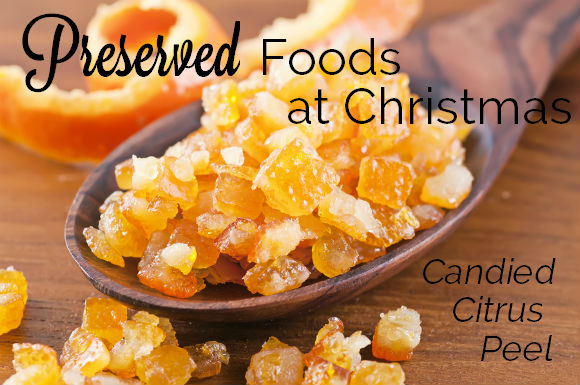
First, a few items of note:
Christmas in Victorian times focused very heavily on food and family and very little on gifts. Thus, the Christmas feast was held in high regard and it seems that every family — regardless of class — made the effort to feast and celebrate together with the best they could afford with simple traditions like an advent wreath.
Foods that were typically preserved were meats and fruits. This is because, obviously, without refrigeration, meat needed to be preserved in some fashion and the recipes below are some of the many ways Victorian cooks did so. Also, fruits were often preserved because many fruits weren’t grown in England, so they were preserved whenever they were imported in order to be available through the winter, and especially at Christmas. Items such as citrus fruits and raisins play center stage in many dishes. (See how to candy citrus peels and how to make raisins.)
Lastly, kitchens had proper larders, so they were able to store certain fresh, local produce, such as apples and onions, for several months without preserving them.
Seasonal and Preserved Foods for OUR Christmas Tables
And just to make sure it doesn’t get buried at the end of all these recipes, here’s a short list of other seasonal and preserved foods that are great next to the roast goose and Christmas pudding for a traditional Christmas feast.
- Lacto-Fermented Cranberry Sauce
- Applesauce (or raw applesauce, if you prefer)
- Duck or Chicken Pâté with Fresh Herbs
- Sugar Plums
- Fruit and Nut Christmas Cookies
- Mulled Wine
- Wassail
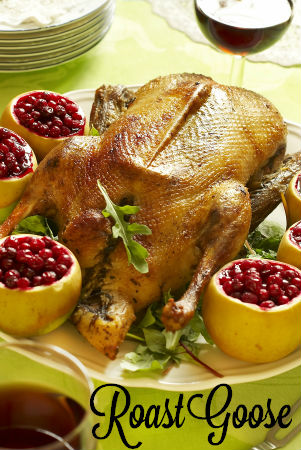
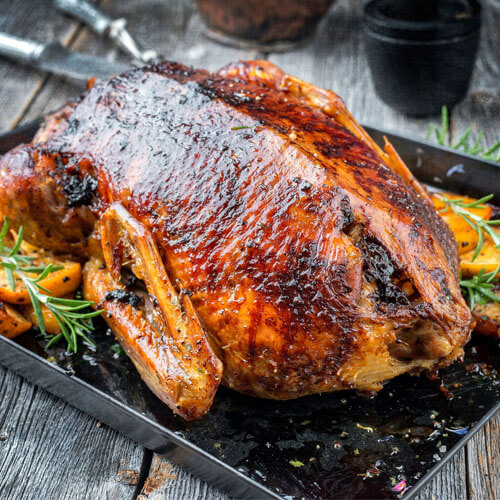
Roast Goose with Classic Bread-Free Herb and Onion Stuffing
Goose, seasonal in England due to migratory patterns, was readily hunted, and while this may seem pretentious to us, it was both easily available and seasonal. Now, you may certainly make this recipe with turkey if that's what's available to you, but I'm including it here with the traditional goose merely because it would make Mrs. Beeton happy (and because I'm hoping those of you who hunt will be able to put the recipe to good use).
Ingredients
- 1 goose or turkey
Stuffing:
- 3 onions peeled but not chopped
- 4 large tart apples peeled, cored, and chopped
- 2 tablespoons dried sage leaves
- 1 tablespoon dried rosemary leaves
- 2 teaspoons dried thyme leaves
- 1/2 teaspoon ground black pepper freshly ground
- 1 tablespoon grass-fed butter very cold , cut into tiny bits
Instructions
-
Preheat oven to 450 degrees Fahrenheit.
Stuffing
-
Fill a medium saucepan 2/3 full of water and bring it to a boil.
-
Place the onions in the boiling water for 5 to 7 minutes.
-
Remove with a slotted spoon and, when cooled, chop finely.
-
In a large bowl, combine the minced onions, apples, sage, rosemary, thyme, pepper, and butter.
-
Stuff the cavity of goose and truss as desired.
-
Roast goose for 15 minutes, then reduce heat to 350 degrees Fahrenheit. (Allow approximately 15 minutes per pound -- including the weight of the stuffing -- so about 2-1/2 hours for a 8-pound goose plus stuffing.)
-
Roast until the internal temperature registers 180 degrees Fahrenheit. The legs should move freely and the juices should run clear.
Giblet gravy
-
Meanwhile, prepare the gravy.
-
Sauté the giblets, onion, and carrot in the butter in a large heavy-bottomed saucepan until the giblets are browned and the onions begin to caramelize.
-
Add the stock, herbs, salt, and pepper. Simmer, partially covered, for about 1 hour, skimming as needed.
-
Strain, skim off the fat, and serve.
Recipe Notes
Garnish the goose with cranberries, apples, and other favorite seasonal fruits as desired.
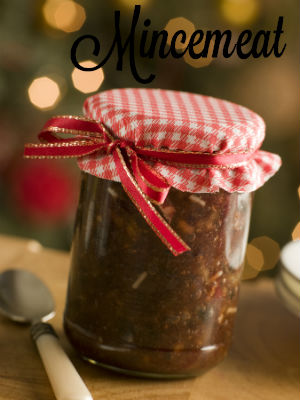
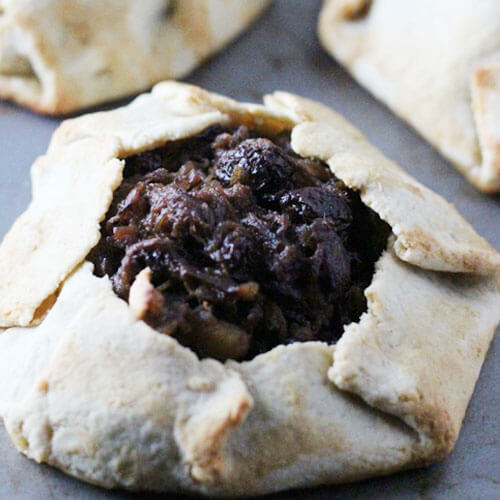
Mince Pie
Making mincemeat was a method of preserving meat by drenching it in alcohol and sealing it in fat. The recipe dates back to the twelfth century when Crusaders returned from the Middle East, where heady spices and fruit often accompanied savory dishes. Thus the tradition of mixing meat, fruit, and sweet spices was familiar in Victorian kitchens, but it was only during the Victorian era when the mixture became clearly associated with Christmas and popularized through Charles Dickens' A Christmas Carol. These days most mincemeat is made without meat, so feel free to skip if it desired.
According to some cookbooks from the time, these jars will keep for up to ten years if stored in a cool, dark place. I'm not sure if I'm confident enough to store them that long, but this recipe can certainly be made at any time in the fall to be ready for Christmas! Makes 6 pints.
Ingredients
- 4 apples tart such as Bramley or Granny Smith, chopped
- 2 cups raisins
- 2 cups dried currants
- 1/2 cup candied peel mixed
- 2 large oranges zest and juice
- 2 large lemons zest and juice
- 1/2 cup whole cane sugar
- 1/2 pound suet shredded, 2 cups
- 1 tablespoon ground cinnamon
- 1 teaspoon ground nutmeg
- 1 teaspoon ground allspice
- 3/4 teaspoon ground ginger
- 1/2 teaspoon ground cloves
- 1 teaspoon sea salt
- 1 cup apple cider alcoholic or not
- 2 pounds beef mutton, or venison (any cut or scraps), boiled and chopped fine
- 1/2 cup brandy
Instructions
-
Place all ingredients except for meat and brandy in a large Dutch oven or other ovenproof pot.
-
Stir well, then cover and set aside for at least 12 hours.
-
Meanwhile, bring a large pot of water to boil, then add your meat.
-
Simmer until completely cooked through.
-
The time will vary significantly depending on the thickness of the meat.
-
When the meat is cooked, let cool and chop fine.
-
Set aside.
-
When you're ready to cook your mincemeat, preheat the oven to 225 degrees Fahrenheit and stir the meat into the fruit mixture.
-
Cover and cook the mincemeat for about 3 hours, then remove, uncover, and let sit at room temperature to cool.
-
Don't worry about all the fat running about -- that is what's going to "seal" the mincemeat and preserve it, as well as make it super-de-duper scrumptious.
-
As the mincemeat cools, stir every once awhile so the fat is evenly distributed.
-
When the mincemeat is completely cool, stir in the brandy and pack the mixture into sterilized jars.
-
Store in a cool, dark place for up to 1 to 2 weeks or follow the standard canning instructions for mincemeat for long-term storage.
Recipe Notes
*See how to shred suet or buy it pre-shredded.
See canning instructions for mincemeat with meat and for all-fruit mincemeat.
To make into pies or small tarts, Wardee's sourdough pie crust works beautifully.
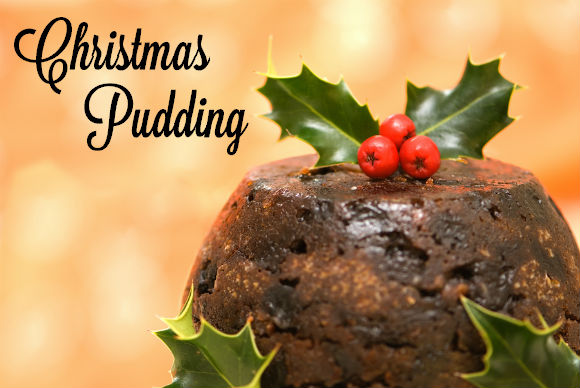
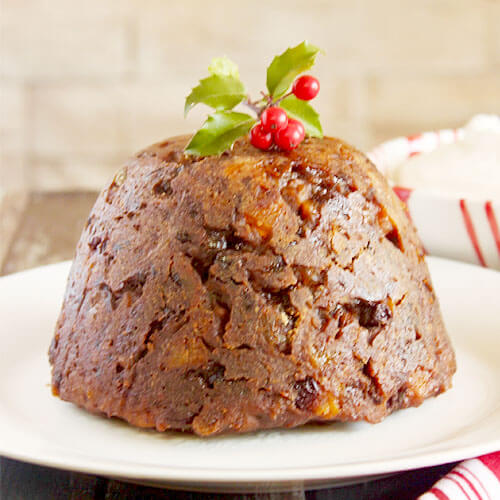
Christmas Pudding
This uses a number of preserved fruits and is best if it sits for several weeks -- the iconic James Beard even recommends making them one YEAR ahead! You can make it just one week ahead if absolutely necessary. This pudding was popularized by King George I, who was known for his love of pudding. "Georgie Porgie, pudding and pie...." Both Plum Pudding and Figgy Pudding are variations of it.If at all possible, use the weight measures, as they'll give the most consistent outcome. The volumes are merely estimates and can vary according to how full you fill your measuring cup, the humidity in your climate, the brand of your flour or fruit, and a myriad of other reasons.Lastly, I should add the disclaimer that I have not yet made the Christmas Pudding listed here. As it takes weeks to age, I wasn't able to finish one before writing this post, although a number of these puddings will be curing on my shelves soon. I'll be sure to give updates if needed, as I'm certain that making these each Christmas will be a new tradition in our family. Serves 12.
Ingredients
- 1-1/2 pounds raisins 5 cups
- 1 pound currants 3 cups
- 4 ounces citron 1 cup, thinly sliced
- 4 ounces mixed candied peel 1 cup, chopped
- 1 pound suet finely shredded *
- 2 cups brandy or cognac, divided
- 1-1/4 pounds breadcrumbs 5 cup, fresh, preferably white sourdough
- 1 cup raw whole milk
- 1/2 pound all-purpose flour 2 cups, unbleached and unbromated (freshly ground if possible)
- 1 teaspoon ground cinnamon
- 1/2 teaspoon ground nutmeg
- 1/2 teaspoon ground allspice
- 1/4 teaspoon ground cloves
- 1/4 teaspoon ground pepper
- 1 teaspoon sea salt
- 12 eggs
- 1 pound whole cane sugar 2 cups
- 1 lemon zest and juice
- 1 orange zest and juice
Instructions
-
The day before preparing the puddings, first prepare the suet by placing it in a food processor along with 1 tablespoon of flour and pulsing until it's very fine.
-
Then place the fruit, peel, and suet in a medium bowl.
-
Pour 1 cup of the brandy over it, making sure all the fruit is completely covered, as the fruit will swell.
-
Cover and set aside.
-
The following day, prepare the breadcrumbs, if necessary, by tearing fresh pieces of bread into chunks and pulsing them in a food processor until fine.
-
You should have 5 cups of breadcrumbs when you're finished.
-
Dump into a very large bowl, then pour the milk and the remaining cup of brandy over.
-
Toss and let sit at least 15 minutes.
-
Meanwhile, prepare your molds and steamer(s).
-
This recipe makes makes approximately 28 cups of pudding batter, so prepare enough molds to hold that volume.
-
Size doesn't matter much, so I recommend anything from Pyrex mixing bowls or wide-mouth Mason jars to actual ruffled metal pudding molds.
-
The only considerations to remember are that the mold must be able to sit in boiling water for several hours, you'll want to store the pudding in this mold (so don't choose any bowl you use regularly), and you'll need to be able to remove the pudding easily when it's time to eat it.
-
Butter the molds generously and set aside.
-
To prepare a steamer, invert a plate or set a wire canning rack inside a large stock pot (make sure the pot has a lid).
-
Fill the pot with enough water that the water will come a little more than halfway up the sides of your molds, then set the pot to boil.
-
Prepare multiple steamer pots if desired.
-
Then, finish preparing the pudding.
-
In a large bowl, beat the eggs, then beat in the sugar until thick and well-mixed.
-
Add the flour, spices, and salt to the breadcrumbs, stir briefly, then add the egg mixture, the fruit mixture, the zests, and the citrus juices.
-
Stir until well combined, then place in prepared molds, filling each about 2/3 full.
-
Cover each mold tightly with greased parchment paper, foil, and string, or if using Mason jars, a metal lid.**
-
Place the mold in the boiling water, ensuring that the water doesn't touch the cover or come up underneath it.
-
Place the lid on the pot and steam for 6 to 7 hours, replacing with more boiling water as needed to keep the water level consistent.
-
If you've got multiple puddings to steam, just set them aside in a cool place (doesn't have to be the refrigeratountil there's room in the steamer.
-
If you've got glass molds, be sure to let them sit at room temperature before placing them in the boiling water.
-
After 6 to 7 hours, remove the pudding from the water and let cool completely at room temperature.
-
Move to a cool, dark place (such as a refrigerator, a wine cellar, or the freeze and store for up to 1 year.
To Serve
-
Prepare a steamer as directed above and steam for 2 to 3 hours. (If stored in the freezer, thaw for at least 24 hours before steaming.)
-
Unmold hot pudding onto a flame-proof plate, then at the table, pour 1/2 cup brandy over the pudding and light with a match.
-
When the flames subside, divide into individual portions and drizzle with an orange or brandy sauce.
Recipe Notes
*See how to shred suet or buy it pre-shredded.
**There's an excellent short video tutorial on how to fasten a cover on a mold at BBC Good Food. I would suggest that rather than removing the cover after steaming and replacing with a new cover, as in the video instructions, leave the cover in place in order to keep germs and bacteria out, since these puddings may be stored for some months.
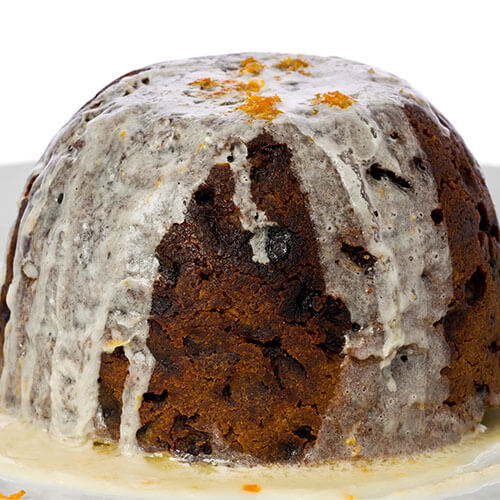
Orange Brandy Sauce
Ingredients
- 1/4 cup butter
- 1/2 cup whole cane sugar
- 3 tablespoons heavy cream
- 2 tablespoons brandy OR orange liqueur or orange juice
- pinch sea salt
Instructions
-
In a small saucepan, melt butter over medium heat.
-
Whisk in remaining ingredients.
-
Simmer until sugar has dissolved and the sauce has thickened slightly, about 5 minutes, whisking often.
-
Drizzle over warmed puddings.
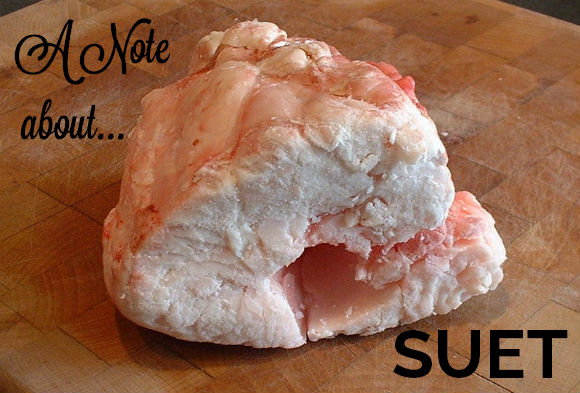
“But isn’t there anything I can use besides suet?”
I suspect many of you are wondering this, so let’s just jump in. Yes, there are suet substitutes, but know that the final textures will change and that it is absolutely worth sourcing out suet, for both the nutritional aspect of healthy fats and for the flavor. Let me explain….
Suet is the fat around the kidneys on cows, sheep, deer, etc. On pork, this fat is called “leaf lard” because it produces superior pastries and doesn’t need to be rendered before use. It melts at a very high heat point, so in the case of the Christmas pudding, for example, it is solid when it’s packed into the mold and as the pudding cooks, it melts and thus leaves air pockets throughout the pudding. This is necessary (and very desirable) because the pudding is very rich and dense and those air pockets keep the texture and flavor “light” on our tongues. If you use melted butter, for example, often the resulting pudding is heavy, oily, and — while delicious — it just doesn’t have the same effect.
So, here are a few ideas if you can’t get suet:
For the pudding, use either 1 pound of butter or 1 pound of palm oil plus 1 teaspoon of baking powder. Freeze the butter or oil, then grate it on the coarse side of a box grater, toss the shreds with a few tablespoons of wheat or rice flour to coat each piece, then return it to the freezer until ready to add to the recipe. The shreds should be absolutely solid when added.
For an all-fruit mincemeat, you may either skip the suet altogether and just add 2 to 4 extra apples for the pectin, or use 1/2 pound butter, or 1/2 pound palm oil. Neither of these will approximate the flavor of the suet-based mincemeat, but they will certainly render a scrumptious mincemeat nonetheless.
Merry Christmas to all, and may your holiday be full of feasts and family! What seasonal and preserved foods do you bring out for special occasions? Feel free to share links!
More Christmas Ideas For You to Enjoy
We only recommend products and services we wholeheartedly endorse. This post may contain special links through which we earn a small commission if you make a purchase (though your price is the same).


I was not expecting this traditional type of Christmas meals. This is very interesting and I like that you went into details about the Suet as I never even heard of it! Thanks for posting this and yes I would love to see how your pudding comes out! 🙂
Thanks, Victoria! Yes, I’ll post an update about my puddings – it may be next Christmas, though, as I think I’ll be storing them until then. 😉
Thanks for this post! I am fascinated with the Victorian era (I’m a volunteer docent at a local Victorian museum). BBC also had a series called “Victorian Kitchen”. I enjoyed a few episodes of it on Youtube, but it looks like it got removed.
As I remember back the candied citrus peel was a rave at many craft magazine a few years back. Its easy to make and doesn’t cost much. Its actually much healthier to DIY the candied citrus peel at home because it without those preservatives chemical in most commercial bought candied citrus peel sold at the store.
We make a steamed pudding for Christmas. The recipe was a least my great grandmother’s, but I actually have no idea how old the recipe is. When I was little my mother made it with suet, but over the years it has become harder and harder to find. Using substitutes did change the texture of the pudding, but it is still wonderful. Our pudding only has carrots and raisins in it, no alcohol and it is not aged. Not sure what the purpose of aging is. Our puddings are often eaten before they are cooled…I also dislike the sauce (ours is also a simple thickened sugar water). I know that is the traditional way to eat it but I like butter on mine. My father’s mother also made a steamed pudding at Christmas. Hers was not so good as my mother’s and the sauce was some thick brown goop, not sure what either was made of. So basically after the ramble, steamed pudding is yummy and could you explain the purpose of aging…
You are so right – it’s so good!
From what I understand, the aging of the pudding has no function except to let the flavor mellow and mature and let the texture dry out a bit (so it can absorb more alcohol for preservation, I suppose!). And whether “proper” aging happens over one week, all of Advent, or an entire year is a debate that’s been going on for centuries, so if you want to age your puddings, I think you can decide to do pretty much any length of time. 🙂
I haven’t been able to find substantial evidence that the aging provides any other benefit, though, and like you mentioned, they’re still absolutely scrumptious straight out of the steamer, so I say, prepare them any way you like. 🙂
These are great! I have always wanted to make a Christmas Pudding like this, but haven’t worked up the nerve. Lol.
…By the way, for some reason, this site has become very hard to see- the top part of the webpage covers a third of the screen. Is there a way to minimize the section that has the “Home Recipes Login” links on it? It’s covering up part of the title of the article even. :/ Thanks!
Can the mincemeat preserve without pressure canning for 90 minutes? They can’t have done that in victorian times….hmmmm. I can’t find any other information on this. Have you experimented or found evidence that it was done this way?
Is there any way to make these without the alcohol? Maybe a substitution?
It is rare to find an actual mincemeat recipe, anywhere. My family has been making it for generations. My mom makes it and we are all thankful for the pies she gives us at Christmas time. Any skeptical newcomer to the family is soon converted. Venison, moosemeat, wild rabbit( the best ever IMHO) and even goat on a lean years hunting. There is nothing like a piece of mincemeat pie &/or plum pudding with a cup of well brewed tea on a dark, cold, snowy December afternoon. I have made it using grammies’ recipe. Late years I let Mom make it, sometimes she substitute’s butter for the suet, and it is frozen till needed, or the pies are made and frozen till needed. Thanks for the inspiration and memories, and ideas for ornaments??
I like the Christmas Pudding recipe, probably would make it with the butter, but I cannot have alcohol due to the many prescription medications I am on. Can I use a fruit juice instead of the brandy to get rid of the alcohol content I cannot have?